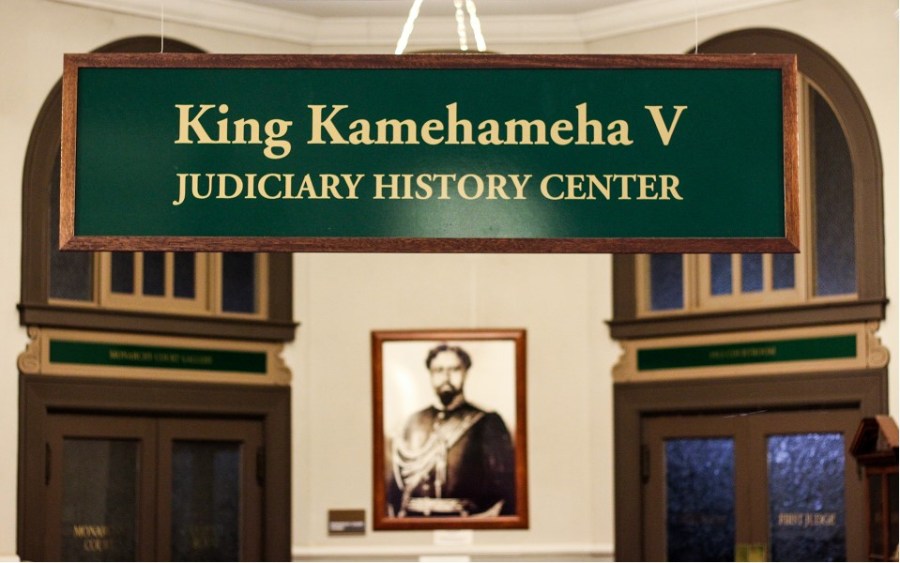HONOLULU (KHON2) — The King Kamehameha V Judiciary History Center is one of the most significant historical sites in Hawai’i, and it’s undergoing a transformation.
As the museum reimagines its exhibits, its goal is to offer a fuller and more inclusive narrative of the state’s legal history, one that acknowledges both Indigenous and settler perspectives.
The renovation is meant to celebrate the 150th anniversary of the courthouse building and is expected to enrich the visitor experience and deepen the connection to Hawai’i’s complex past.
You have the opportunity to explore 1,000 years of judicial history, from Hawaiʻi’s traditional Kapu system to the courts and laws we know today.
The Judiciary Center is the nation’s first history museum dedicated to the U.S. judicial branch. Since its opening in 1989, the Center has connected Hawaiʻi’s Judiciary with the public and welcomes more than100,000 visitors annually.
A vision for the future
Keahe Davis, Education Director of the King Kamehameha V Judiciary History Center, explained the direction of the exhibit redesign.
“We want to tell a fuller story, incorporating both Indigenous perspectives and settler perspectives on law,” he said. “It’s about understanding where we are today and where we’re going.”
In particular, Davis sees the opportunity to broaden how law is understood in Hawai’i, especially in the context of pre- and post-contact history.
“This area allows us to tell a story that we weren’t able to tell before. It’s about recognizing that Hawaiian concepts like puʻuhonua [a place of refuge, sanctuary, asylum, peace and safety] are central to the discussion of law and society.”
The redesign will not only incorporate more stories but will also transform how visitors engage with the history on display.
“The goal is to use interactive elements like visual and audio aids to better engage visitors and offer deeper context to the complex story of law in Hawai’i,” Davis added.
Highlighting key historical figures
Matt Mattice, Executive Director of the Center, emphasized the importance of focusing on critical moments and figures in Hawai’i’s history.
He pointed to the early 19th century as a pivotal period. It was marked by the transition away from the traditional Native Hawaiian governance systems to a constitutional monarchy.
“King Kamehameha III was central in this shift. He worked alongside Hawaiian advisors like Timoteo Ha`alilio and William Richards to draft the 1839 Bill of Rights, followed by Hawai’i’s first Constitution in 1840,” Mattice explained.
These documents were amongst the first in the world to guarantee rights to all citizens regardless of sex, gender, ethnicity or religious affiliation.
The exhibition also explores the role of Kamehameha I’s descendants in shaping the legal landscape.
“King Kalākaua, who came to the throne in the late 1800s, was another key figure,” Mattice said. “He was the one who sent emissaries to Europe and America to seek recognition for Hawai’i as an independent kingdom. His efforts helped elevate Hawai’i onto the world stage.”
An artistic perspective
Alongside the new interpretive signage and interactive displays, the renovation plans also include space for contemporary art.
Art, Mattice believes, can play a powerful role in helping visitors understand the historical context of Hawai’i’s legal evolution.
He pointed to a notable piece by the late Bernice Akamine, which is part of a collection in the museum’s new exhibition. The piece features colored leaves that map out the route taken by civic clubs during the Hawaiian Petition Movement.
“This artwork ties directly into the Hawaiian petition movement, which was essential in the 1890s, as Native Hawaiians fought to maintain their sovereignty in the face of American encroachment,” Mattice explained.
The artwork also serves as a visual representation of history that allows viewers, especially students, to connect emotionally to the events that shaped Hawai’i.
“These petitions were not just documents; they were a statement of the people’s will,” Mattice said. “Art like this helps convey the importance of that movement, making it more accessible to younger generations.”
Looking ahead: More inclusive and engaging experiences
The renovation is not just about adding more displays or updating the layout. It’s about rethinking how to present the rich legal and cultural history of Hawai’i in a way that honors its diverse stories.
Davis added, “As we reimagine these spaces, we want Native Hawaiians to see themselves reflected in the exhibits. It’s a way to reclaim the narrative and share the depth of our history.”
He believes that the renovation will help visitors appreciate not just the past but also the ongoing impact of historical decisions on the people of Hawai’i today.
Mattice agreed: “The courthouse itself is a symbol of the changing times in Hawai’i. By reimagining how we present the history of law, we’re helping people understand how it has shaped our present and how it will shape our future.”
The museum’s new direction will highlight the evolution of Hawai’i’s legal system from its early days under Hawaiian monarchs to its status today as part of the United States.
By weaving together historical narratives, visual art and interactive displays, the King Kamehameha V Judiciary History Center aims to become not just a museum but a dynamic space for reflection and learning.
You can click here to learn more about the renovations and how the community can help. You can watch a virtual tour of the current museum that includes commentary from Mattice and Davis about the renovations.
As the renovation moves forward, the hope is that visitors will leave with a deeper understanding of Hawai’i’s legal history, one that acknowledges the complexities and contradictions of its past while looking to a more inclusive future.
